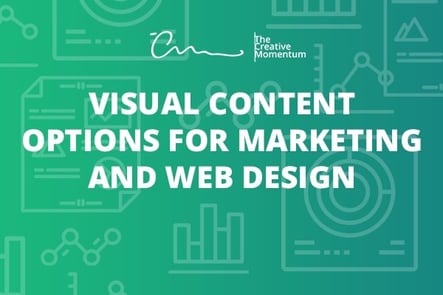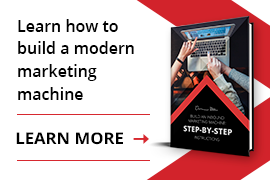
A 2016 report by Social Media Examiner found that 37 percent of marketers believe that visuals are the most important content style for their marketing goals, barely falling short of blogging (38 percent).
Visual content is everywhere, and marketers have more options than ever. At the minimum, incorporate the following five visual content styles into your strategies.
1. Video
The all-powerful video. We’ve talked at length about the power of video in previous articles, but several strategies bear repeating. Leverage video content to support both your marketing and web design goals:
- Produce explainer videos on your site to help build trust with viewers and establish yourself as an authority in your industry.
- Include video on landing pages to substantially increase conversions.
- Incorporate video into your social media marketing to drive traffic to your website.
2. Infographics
Infographics have gained serious momentum over the past few years thanks to their ability to deliver in-depth data while remaining accessible to the average reader. HubSpot details (via infographic, naturally) how effective infographics are at improving data retention and generating steam on social media.
If you need to provide extensive statistics without boring your audience to tears, consider packaging the information in an infographic.
3. GIFographics
Never heard of a GIFographic? You’re not alone. This one is a relatively new entry into the visual content medium and took hold only when content marketing experts like Neil Patel started promoting them. GIFographics combine animated GIFs with data-rich infographics to create an entirely new content style. These have a few advantages over static media:
- Engagement: Visual content is already more engaging than plain text, and animated images are more dynamic still.
- Narrative: Just like videos, animated images can guide users through a narrative one step at a time. This reduces the need for lengthy explanations and text-heavy imagery.
- Brand Awareness: GIFographics haven’t yet become mainstream, and few brands utilize them regularly. If you make GIFographics an established part of your content marketing strategy, you can score some easy awareness points with readers, who will associate the content with your brand.
4. Screenshots
If you’re trying to walk your audience through a concept, there’s no better tool than screenshots. A single screenshot can provide more information than a paragraph of text, making them a powerful tool for explaining concepts in a concise way. Screenshots are particularly important from a web design perspective for this very reason—when page real estate is limited, the old mantra of “show, don’t tell” goes a long way.
5. Memes
Memes aren’t typically thought of as a marketing tool, but savvy brands understand that the crux of marketing is speaking the language of the people. And in a world where social media accounts for 30 percent of all time spent online, memes are the language we’re speaking.
Now, we’re not saying you have to ditch your brand messaging in favor of the constant jokes and references that most viral memes entail. Just the opposite—the meme may be the medium, but your content should stay consistent with your overall messaging. We won’t go into the endless supply of memes that have taken hold of the social world, but if you need some ideas of how to repurpose your content into this shareable format, this list offers some good examples.
Marketing Yourself with Visual Content
It’s hard to overstate the importance of visual content these days, but simple images and animations aren’t enough to drive marketing results. Be specific and deliberate when you apply visual content, and always be testing your strategies to see which have the most impact.


